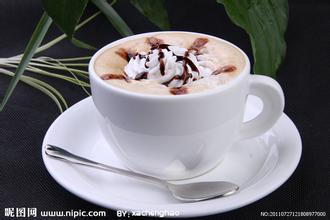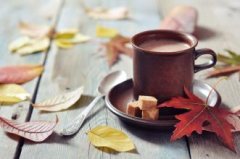A brief introduction to the Market Price of Fine Coffee Bean varieties in Manor Ireta, Panama

When it comes to coffee prices, we should pay great attention to a manor in Panama, and it can even be said that so far, no other single estate has had such an impact on coffee farming in Central America. This is Esmeralda Manor, which belongs to and is run by the Peterson family. It has a very cost-effective bean. And it has a very beautiful name-Flower Butterfly. She has 40% high-quality Rosa pedigree, which is composed of Rosa, Kaddura and Kaduai. It is planted in the Baru volcano region of Pokut and grows in the volcanic area at an altitude of 1600 meters. The treatment plant uses fine washing treatment. Panama's special local microclimate leads to abundant rainfall in this area, and a large temperature difference between day and night, coupled with the unique volcanic rock and soil of the volcanic area, as well as meticulous harvesting and fine treatment. What makes this coffee excellent in terms of thickness, acidity and flower aroma is that, on the basis of very excellent quality, the very people-friendly price makes this coffee bean cost-effective. What is special about this coffee bean is that it is made up of three varieties, of which 40% are rosy summer varieties, giving this coffee a distinct rosy summer flavor. According to the information obtained, due to the historical reasons of the manor, in order to pursue yield at that time, the early Rosa varieties were mixed with the coffee trees of Kaddura and Kaduai, and in order to facilitate picking, coffee farmers did not reclassify them, but directly mixed the three varieties. After that, as Rosa rose to fame and the price was soaring, the processing plant began to carry out fine washing treatment for such a coffee bean. Now there are many ways of washing, but generally speaking, the floating beans are removed after the coffee fruit is picked, then the pulp is removed, and the coffee beans are soaked in a fermentation tank, and the enzymes in the water soften the mucus attached to the peel of the coffee beans. Natural yeast breaks down sugars in mucus, a process called fermentation. After the fermentation is completed, move the coffee beans to the sun field to dry. In the process of drying, you need to constantly turn the coffee beans to ensure the uniformity of the drying. Finally, the shell is kept in the warehouse, and some raw bean merchants place an order before shelling and bagging. The processed coffee tastes clean, emphasizing bright and lively acidity, as well as clear fruit flavor and floral aroma.
Central America is a long isthmus from northern Mexico to southern Colombia, connecting North and South America. Panama is located in the southernmost part of Central America, so the country runs from east to west, not from north to south as people think. This means that the coast of the Caribbean (Atlantic) is in its north, while the Pacific is in the south.
Panama is by far the narrowest country that shares the Atlantic and Pacific coastlines. And this has a far-reaching impact on coffee production. In the coffee-producing region of Chiriqu í, the hometown of world-renowned estates such as Hacienda La Esmeralda, Elida Estate, Finca Nuguo, and Finca La Mula, the marine climate is a huge system covering the entire hemisphere only 60-70 km from the ocean. Other currents in the Caribbean originate as far away as Iceland, while some east-west currents in the Pacific Ocean originate half a world away off the coasts of Japan and Indonesia. On the island of Panama, which is less than 100 kilometers wide, these global climate systems intertwined and collided, creating amazing microclimate change. The wind swirls and changes direction; rain without warning, clouds floating on the hills with fog and ice rain Willem Boot, owners of two Panamanian farms, Finca Sox í an and Finca La Mula, are also award-winning varieties of rosy summer coffee. In February 2015, I went to Finca La Mula Manor with the professional manager of Boot, along with my friend Kelly Hartmann, a Panamanian native. In summer in Panama, the climate from January to April is much drier than when I first visited Panama. But Boot reminds me that when you get to the farm, you will find that "dry" is only relative. "this is basically a forest in the clouds, and when the clouds come, the temperature will drop sharply." This is how Boot describes it. We climbed the steep hillside of the manor and passed through the thick clouds, which covered everything that La Mula was a dense forest and huge shade trees covered most of the planting area. There is also a second layer of shade trees that grow lower than them, and under this vault are rosy summer coffee trees that have a unique flavor because of the environment.
Boot told us: "if the cloud period is regular and becomes a regular phenomenon, it shows that it can cause some unique situations for trees." Especially in the presence of fruit trees, plants will respond to the environment and adjust themselves. When there is no sunlight, the leaves get a higher water supply, and the photosynthesis of the trees is slow, which lengthens the ripening period of cherries, making the flavor stronger, especially in terms of sweetness and acidity. " So will humidity make it more difficult to grow? "it doesn't matter," Boot said. "We want these unique things to happen, and that's what makes them unique."
The thick forest ensures that the clouds can last on the hillside. Under the joint action of trees and clouds, combined with high altitude, so that coffee can grow in a cool and humid environment
Panama's geographical advantage is that it has many distinctive microclimate areas suitable for coffee cultivation, and Panama also has many persistent and professional coffee growers. This means there will be a lot of very good coffee in Panama, but these coffees are often associated with high prices.
The high price of coffee in Panama is mainly caused by the following factors:
Land price: for the people of North America, they very much want to buy a stable and beautiful land at a low price. Panama is such a place.
More Panamanian farmers export coffee in the name of manors to emphasize their manors
Panamanian labor law has higher requirements for labor employment, so the coffee industry has to pay higher wages, which has to be paid by consumers.
Esmeralda Manor
Important Notice :
前街咖啡 FrontStreet Coffee has moved to new addredd:
FrontStreet Coffee Address: 315,Donghua East Road,GuangZhou
Tel:020 38364473
- Prev

A brief introduction to the flavor, taste and aroma of Panamanian Coffee Manor Ireta Manor
Panamanian Rose Summer: a rare wild variety, the champion and regular guest of various tasting competitions in the world. The appearance of raw beans is slender, ripe beans have unexpected citrus aromas, and the aftertaste is full of flowers and sweet fruit. Absolutely unique boutique coffee. Rosa originated from a very rare wild species in Ethiopia, and the name of the bean may have been found near a small local village called Rosa.
- Next

A brief introduction to the history and culture of the origin and development of boutique coffee beans in the Ireta Manor of Panama.
Geisha, sweeping the coffee industry with the power of a hurricane, the coffee revolution is so fierce that the Blue Mountains of Jamaica and Kona of Hawaii, which have occupied the throne of the coffee kingdom for a long time, have to stay away. This wild species, which originated in Ethiopia, is now widely used in major coffee producing areas after numerous battles, and its best spokesman is "L" from Panama.
Related
- Does Rose Summer choose Blue, Green or Red? Detailed explanation of Rose Summer Coffee plots and Classification in Panamanian Jade Manor
- What is the difference between the origin, producing area, processing plant, cooperative and manor of coffee beans?
- How fine does the espresso powder fit? how to grind the espresso?
- Sca coffee roasting degree color card coffee roasting degree 8 roasting color values what do you mean?
- The practice of lattes: how to make lattes at home
- Introduction to Indonesian Fine Coffee beans-- Java Coffee producing area of Indonesian Arabica Coffee
- How much will the flavor of light and medium roasted rose summer be expressed? What baking level is rose summer suitable for?
- Introduction to the characteristics of washing, sun-drying or wet-planing coffee commonly used in Mantenin, Indonesia
- Price characteristics of Arabica Coffee Bean Starbucks introduction to Manning Coffee Bean Taste producing area Variety Manor
- What is the authentic Yega flavor? What are the flavor characteristics of the really excellent Yejasuffi coffee beans?

